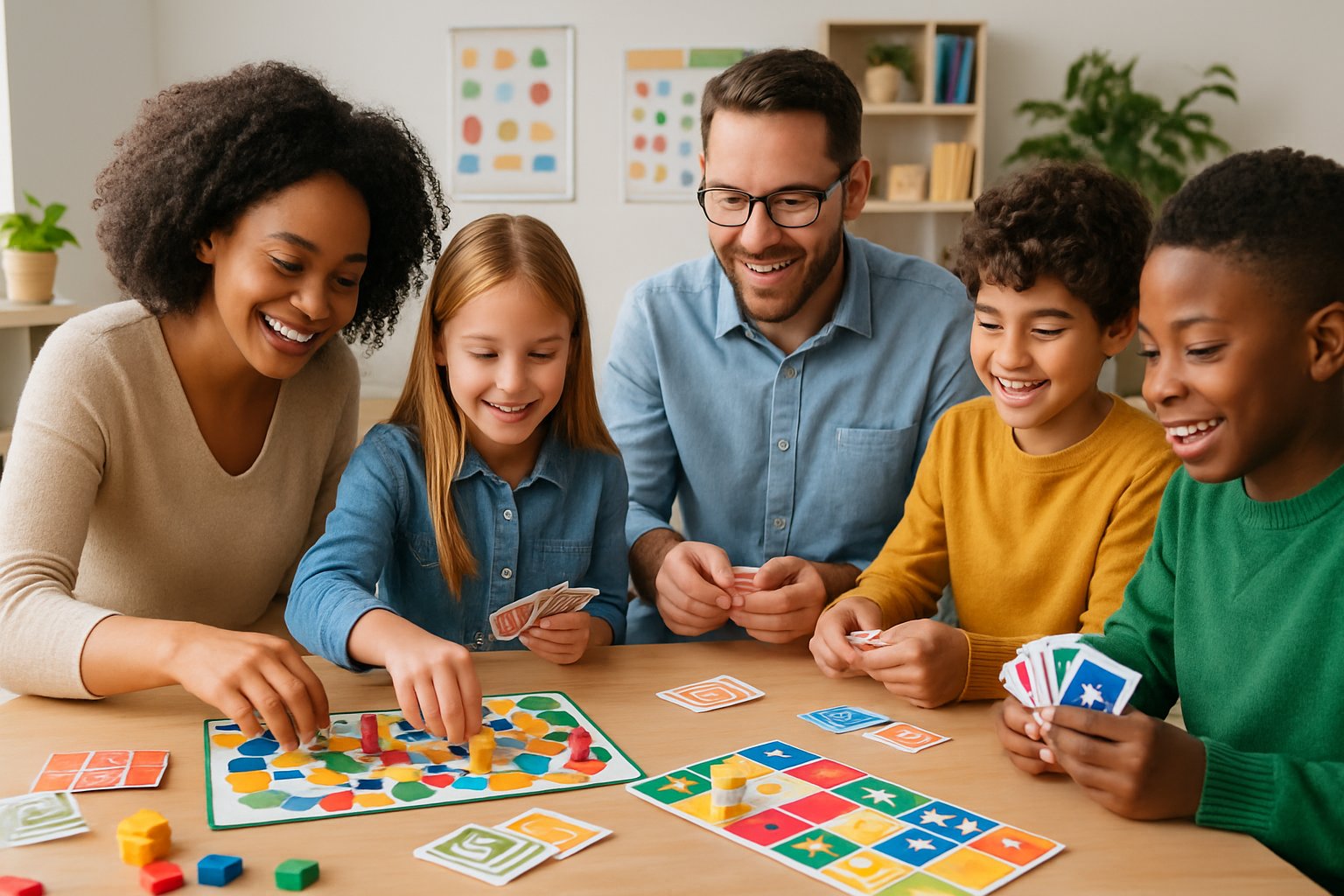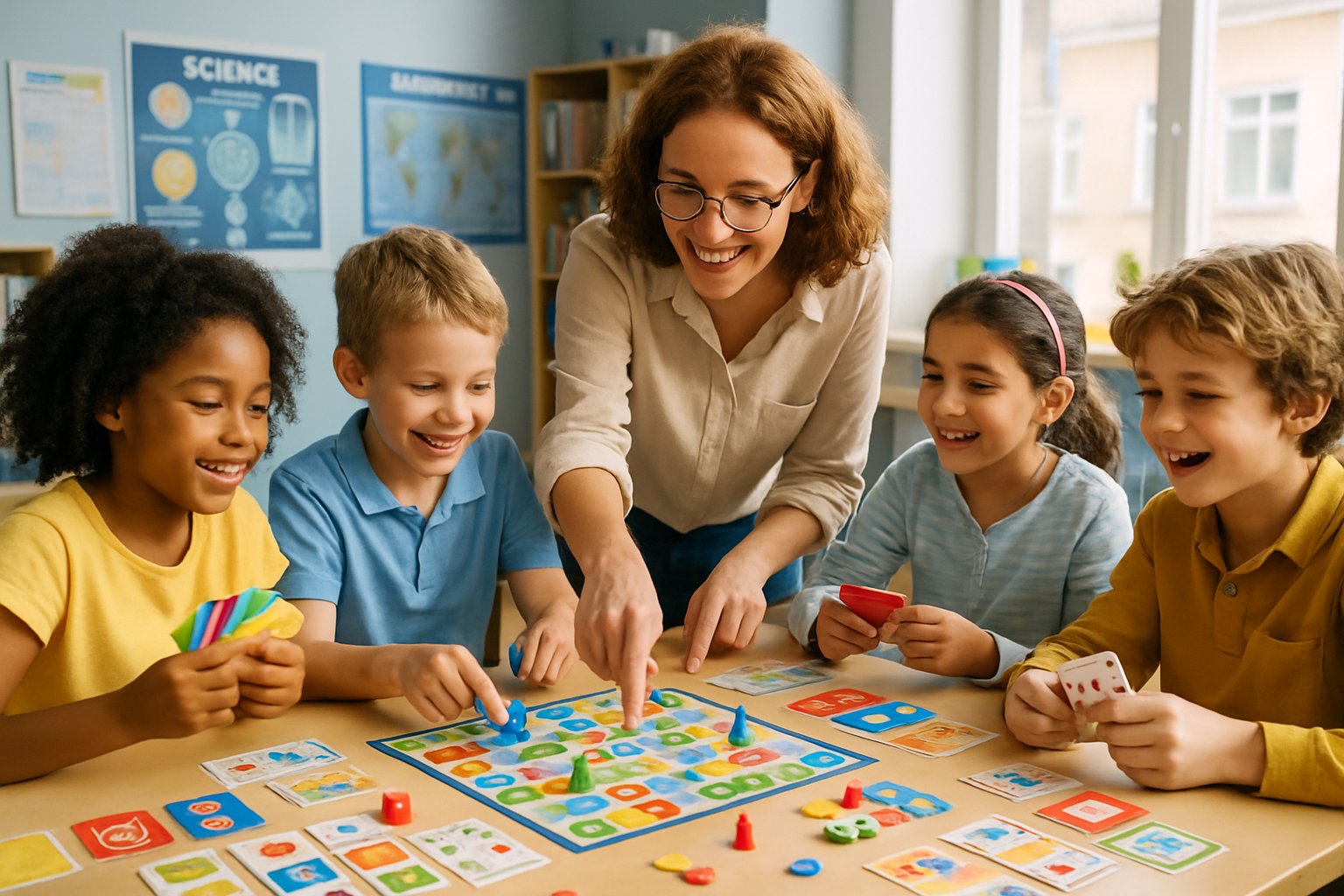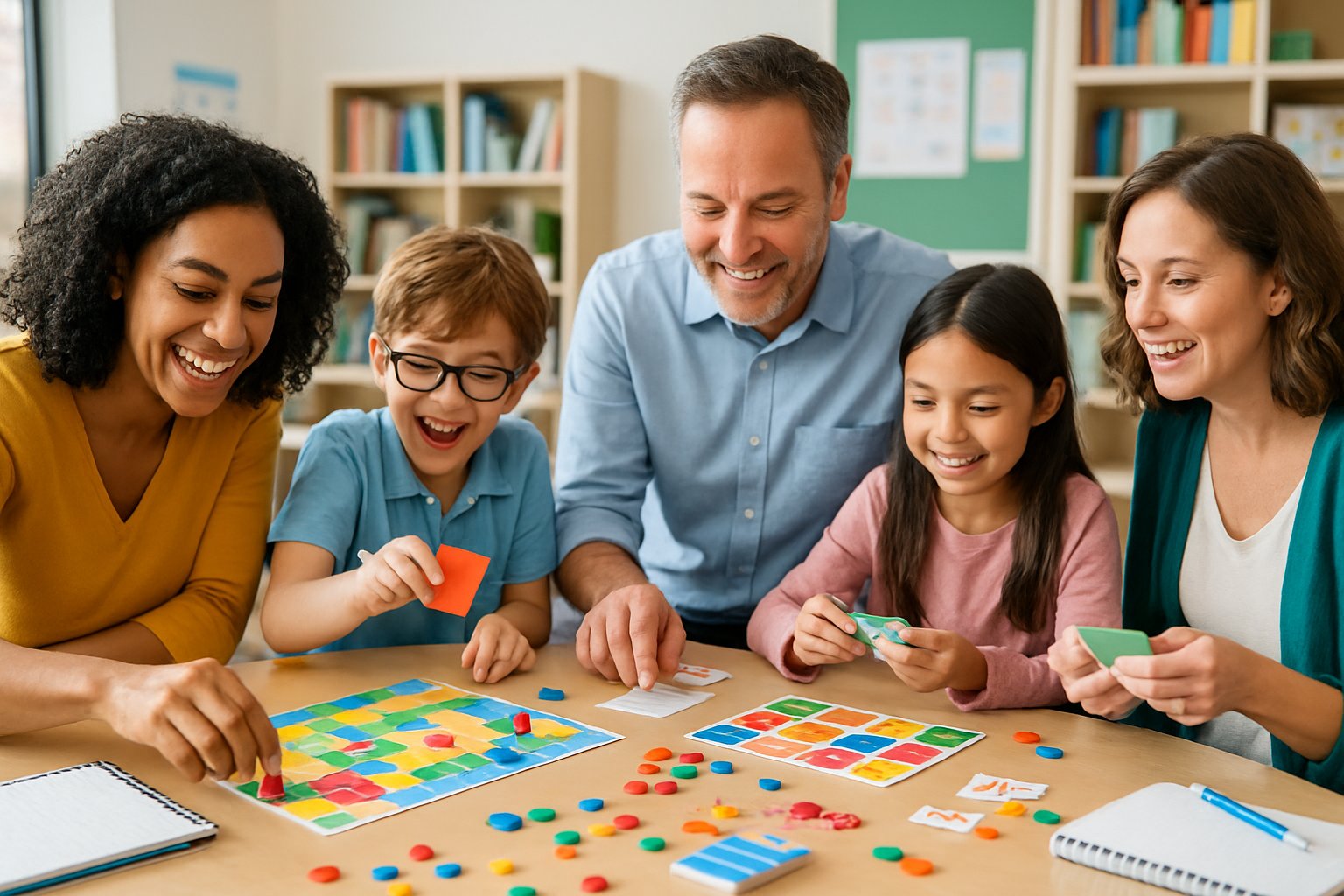Benefits of Using Board Games and Card Games for Learning

Board games and card games can strengthen reasoning skills, encourage teamwork, and make lessons more engaging. They also give students chances to practice decision-making and communication in ways that feel natural and enjoyable.
Enhancing Critical Thinking and Problem-Solving
Games often require players to plan ahead, weigh options, and adapt when situations change. This process helps students practice critical thinking in a structured but low-pressure setting.
For example, strategy games challenge players to predict outcomes and adjust moves. These activities mirror real-world problem-solving where choices have direct consequences.
Research shows that playing board games can improve executive function and academic skills. Students learn how to analyze information, compare strategies, and refine their decisions over time.
Card games also support logical thinking. Many involve probability, pattern recognition, or memory skills. By playing regularly, children strengthen their ability to think flexibly and apply reasoning to new situations.
Boosting Student Engagement and Motivation
Traditional lessons can sometimes feel repetitive, but games add an element of play that keeps students interested. When learning feels like fun, they are more likely to stay motivated and participate actively.
Board games encourage curiosity by offering immediate feedback. Winning or losing a round shows students the results of their actions, which makes them eager to try again.
Teachers often use games to reinforce content because they increase motivation and engagement. Students are more willing to review material when it comes through interactive play instead of worksheets or lectures.
Even simple games can spark excitement. Rolling dice, drawing cards, or moving pieces across a board adds variety to the classroom routine and helps students focus longer.
Supporting Social and Emotional Skills
Games create natural opportunities for collaboration. Players must listen, take turns, and work as a team, which strengthens communication skills.
They also teach students how to handle winning and losing. Learning to cope with setbacks in a game can build resilience and patience.
Many educators note that board games encourage cooperation and teach social skills. Students practice empathy by considering others’ perspectives and respecting rules.
Card and board games also reduce pressure by shifting attention from grades to shared play. This helps students feel more comfortable expressing ideas and taking risks in a supportive environment.
Types of Game-Based Learning Activities
Game-based learning activities give students hands-on ways to practice problem solving, collaboration, and critical thinking. They often use familiar formats like board games, card games, or puzzles to make lessons more interactive and memorable.
Board Games for Educational Purposes
Board games can help students practice strategy, decision-making, and teamwork in a structured way. Many classroom-friendly titles focus on subjects like math, reading, or science. For example, teachers use educational board games to reinforce basic skills while keeping students engaged.
These games often include rules, goals, and a clear end point, which helps learners stay focused. By playing, students get immediate feedback on their choices, which can improve retention compared to passive learning.
Some board games are cooperative, requiring players to work together, while others are competitive. Both formats build useful skills—cooperative play encourages collaboration, while competitive play strengthens resilience and adaptability.
| Benefit | Example Skill Gained |
|---|---|
| Turn-taking | Patience, fairness |
| Strategy planning | Critical thinking |
| Group interaction | Communication skills |
Card Games in the Classroom
Card games are simple, portable, and adaptable to many subjects. Teachers often use them to reinforce math facts, vocabulary, or memory skills. For instance, games like Uno can help students practice matching, sorting, and recognizing patterns, which supports logical thinking.
Unlike some board games, card games usually move quickly. This makes them useful for short review sessions or small group activities. Students can rotate partners and play multiple rounds, giving them repeated exposure to the material.
Game-based learning with card games also encourages strategic thinking. Learners must plan moves ahead, anticipate outcomes, and adjust based on other players’ actions. These skills transfer well to problem solving in academic and real-life settings.
Incorporating Puzzles for Skill Development
Puzzles challenge learners to recognize patterns, test ideas, and persist until they find solutions. They can be physical jigsaw puzzles, word puzzles, or logic-based activities like Sudoku. Each type develops different abilities, from spatial awareness to vocabulary building.
In classrooms, puzzles are often used for independent or small-group work. They promote concentration and patience, while also giving students a sense of accomplishment when completed.
Research shows that puzzles support game-based learning activities by combining problem solving with hands-on practice. For example:
- Crossword puzzles build language and recall.
- Logic puzzles strengthen reasoning.
- Jigsaw puzzles improve visual-spatial skills.
Because puzzles can be scaled in difficulty, teachers can adapt them to fit different grade levels and abilities without needing complex instructions.
How to Integrate Board Games and Card Games Into Learning

Teachers and parents can use board games and card games to support specific learning activities, build problem-solving skills, and encourage social interaction. Choosing the right game, planning how it fits into lessons, and balancing structured and free play are key steps in making game-based learning effective.
Choosing the Right Games for Learning Goals
Selecting a game starts with matching it to the lesson’s purpose. For example, math teachers might adapt Uno with number challenges, while history teachers could use trivia games that reinforce key facts. The focus should always be on whether the game supports the intended learning activity.
It helps to look at three factors:
- Familiarity: A game students already know reduces time spent learning rules.
- Complexity: Simple mechanics work best for younger learners, while strategy-heavy games fit older students.
- Gameplay type: Cooperative games foster teamwork, while competitive ones encourage individual problem-solving.
Educators can also adapt existing games by adding custom cards or modifying rules. A study on educational board games in classrooms shows that redesigning familiar games helps students focus on the content rather than the mechanics.
Structuring Game-Based Lessons
Games work best when they are part of a clear lesson plan. Teachers should decide when in the class to use the game—at the start for review, in the middle for practice, or at the end for reinforcement.
A simple structure might look like this:
- Introduce the rules and learning objectives.
- Play the game in small groups or pairs.
- Reflect by discussing strategies, answers, or outcomes.
Using tools like question cards or score sheets can help tie gameplay to learning outcomes. For example, students might earn points for correct answers that allow them to move forward in the game. Research on game-based learning in classrooms highlights that linking activities directly to lesson goals increases engagement and retention.
Balancing Structured and Unstructured Play
Structured play ensures students meet learning goals, but unstructured play gives them freedom to explore strategies and practice social skills. A balance of both creates stronger engagement.
In structured sessions, the teacher sets clear rules, tracks progress, and connects outcomes to subject content. In unstructured sessions, students may adapt rules, create variations, or reflect on what strategies worked.
Allowing space for free play can encourage creativity and collaboration. Teachers can later guide a short discussion to connect that experience back to the lesson. As noted in studies on board games as educational tools, this balance helps make game-based learning both enjoyable and effective.
Tips for Maximizing the Impact of Game-Based Learning

Students benefit most from game-based learning when the environment supports participation and when teachers check that learning goals are met. Both the setup of play and the way outcomes are measured influence how effective the experience becomes.
Creating a Positive and Inclusive Environment
A welcoming environment helps every student feel comfortable joining in. Teachers can set clear expectations for respectful play and teamwork before the game begins. This reduces distractions and keeps focus on the learning task.
Games that encourage collaboration often work best. For example, group-based board games can require students to share ideas and make decisions together. This fosters communication, builds trust, and supports social learning.
It is also important to adapt rules when needed. Small adjustments, such as simplifying instructions or giving extra time, make the game more accessible. Research shows that when games are easy to follow, students are more likely to stay engaged and benefit from the activity (Engaging Students in the Learning Process with Game-Based Learning).
Teachers may also rotate roles so that all players contribute equally. One student might keep score, another might ask questions, and others might solve challenges. This prevents a few voices from dominating while giving quieter students a chance to shine.
Assessing Learning Outcomes Through Games
Games should not only be fun but also connect directly to learning goals. Teachers can assess outcomes by observing how students solve problems, explain answers, or apply knowledge during play.
Simple checklists or short reflection sheets can track progress. For instance:
| Method | Purpose | Example |
|---|---|---|
| Observation | Monitor participation | Note teamwork and decision-making |
| Reflection | Encourage self-assessment | Write one skill learned |
| Quiz | Test knowledge | Quick 5-question review |
Assessment does not need to interrupt the flow of the game. Teachers can ask brief questions during play or hold a short debrief afterward. According to Twelve tips for maximizing the effectiveness of game-based learning, aligning game activities with clear objectives ensures that the lessons stick.
By combining play with structured feedback, teachers can confirm that students are not only enjoying the activity but also meeting the intended learning outcomes.
Leave a Reply